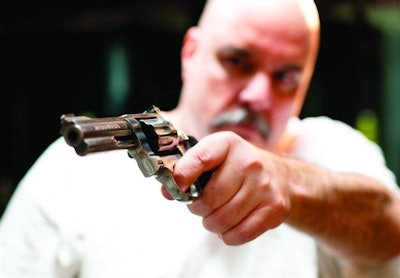 Photo by Mark W. Clark.
Photo by Mark W. Clark.
Step 1: Breathe
Slow down your breathing by bringing your tongue to the roof of your mouth and forcefully exhale. This puts pressure on your vagus nerve to slow down your heart rate and changes your physiology for the better. In turn, this forces you to reassess the situation, and recognize what is happening around you.
Step 2: STOT
STOT stands for security, treat bleeding, open airways, and treat for shock.
Security or situational awareness means you need to understand your surroundings and recognize where the threats are.
Treat bleeding with pressure dressings or a tourniquet.
Open the airways—if the officer is talking, then the airway is open. If you carry a needle airway in a combat intervention kit, use it.
Treat for shock—first and foremost, keep the wounded individual (or yourself if you've been shot) warm. To prevent fainting, remember the mnemonic: If the face is red, raise the head. If the face is pale, raise the tail.
Step 3: Move
Move to a position of safety, preferably to a place of cover.
Related:
















